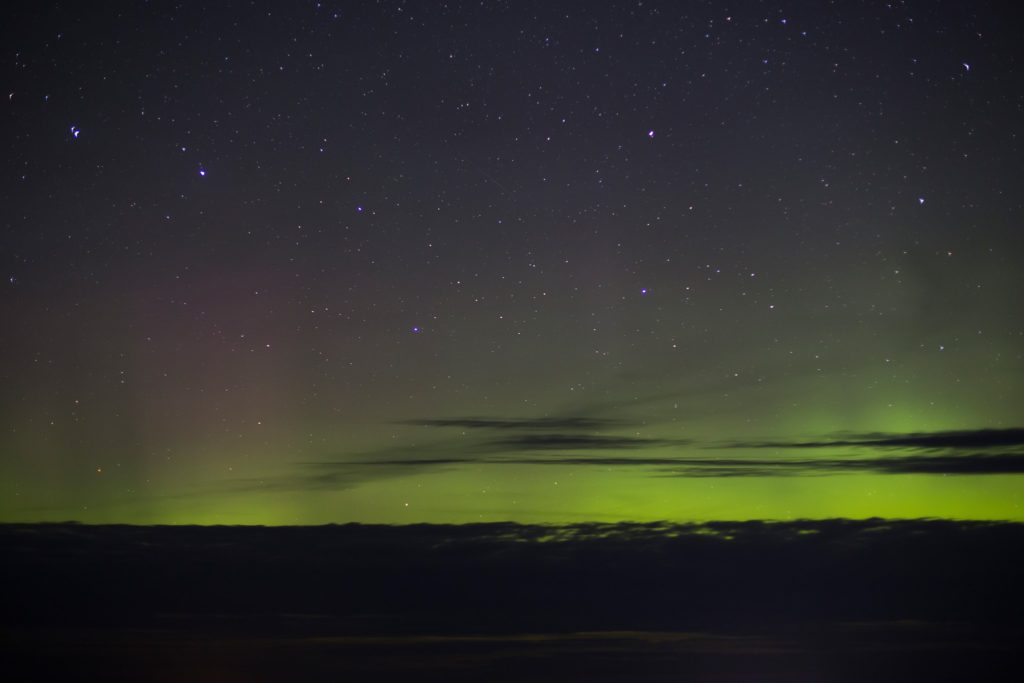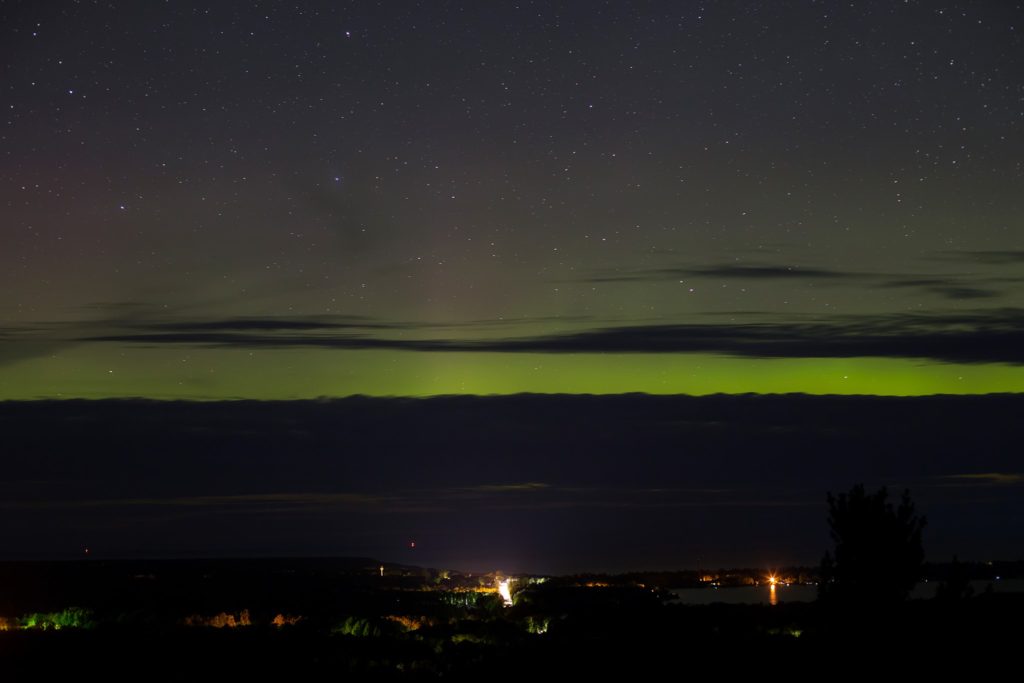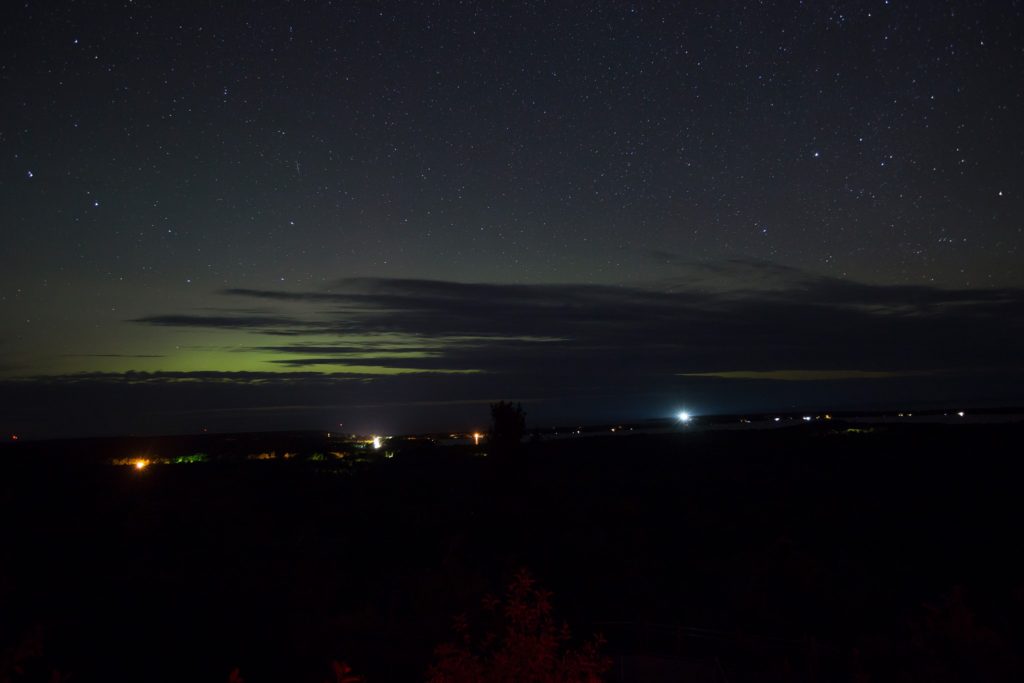Each year people travel north to Michigan’s Upper Peninsula in hopes of catching a glimpse of the mystical Aurora Borealis (Northern Lights). We were lucky enough to be in the right place, at the right time, with the right conditions.
To be successful at seeing the Northern Lights, there are several factors that must come together. The first being the electrically charged particles from the sun must enter the Earth’s upper atmosphere at a very high speed.

Once this occurs, to see the lights, you must:
- Be far enough north (varies)
- Have a clear view of the northern sky
- Be in an area away from city light pollution
- Have clear or mostly clear skies

When we saw them, we were a few miles away from Lake Superior in an low population area. Along with having a clear view of the sky over Lake Superior, we also had access to higher elevation that allowed us to get above the trees.
Time of Year

According to the National Oceanic and Atmospheric Administration (NOAA), Aurora displays in both the north and south increase during the solar maximum and are at a greater frequency during the winter months. During these months, the nights are longer and typically the skies have less haze. The Aurora Borealis can, however, be seen at any time of year.
Resources
Because of the factors involved creating the conditions for the Northern Lights, there is no guarantee that a display will be visible at any point in time. However, there are plenty of websites and apps out there that can calculate predictions of when the lights will occur. Some of them send alerts when there is a chance or when the lights are active.
Keep in mind that the predictions are short term, usually a day or two.
For more information, visit NOAA – About the Aurora Borealis or for predictions, visit NOAA – Space Weather Prediction Center.

Leave a Reply